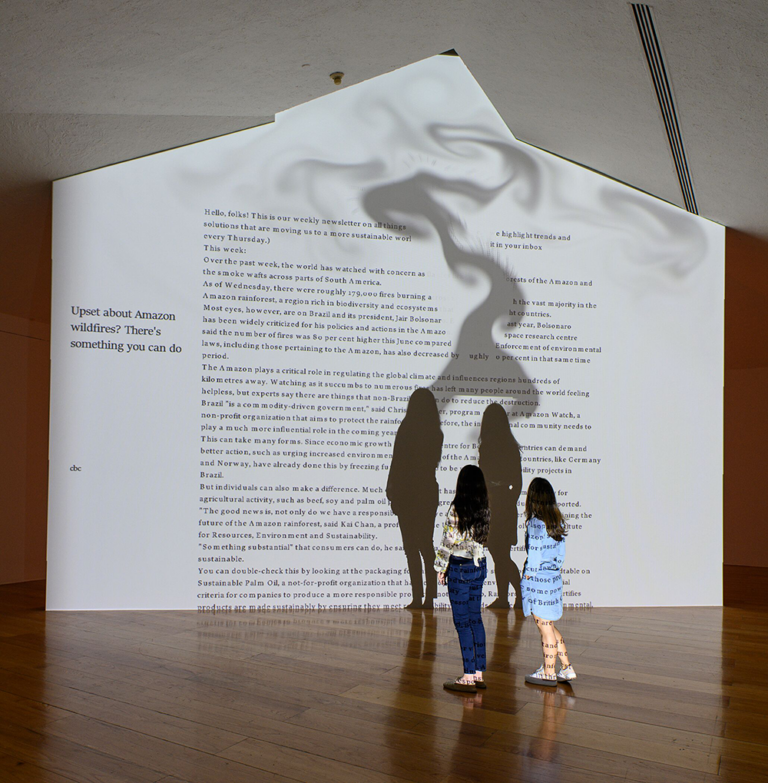
Rafael Lozano-Hemmer, Airborne Newscast, 2013 (installation view, Unstable Presence, Museo de Arte Contemporáneo de Monterrey, 2019–20); courtesy the artist and bitforms, Max Estrella, and Wilde galleries; ©️ Rafael Lozano-Hemmer / Artists Rights Society (ARS), New York / VEGAP, Spain; photo: Roberto Ortíz Giacomán
SAN FRANCISCO, CA (December 18, 2019) — The San Francisco Museum of Modern Art (SFMOMA) presents a robust slate of exhibitions this spring, including presentations dedicated to architect Tatiana Bilbao, pioneer of Bay Area Figurative Art David Park, internationally acclaimed mixed media artist Rafael Lozano-Hemmer, multifaceted designer and artist Tauba Auerbach, interdisciplinary artists Theaster Gates and Cauleen Smith and photographer Gregory Halpern. These six thought-provoking new exhibitions span the museum’s curatorial departments and underscore the museum’s commitment to innovation, wide-ranging artistic excellence and new ways of seeing the world.
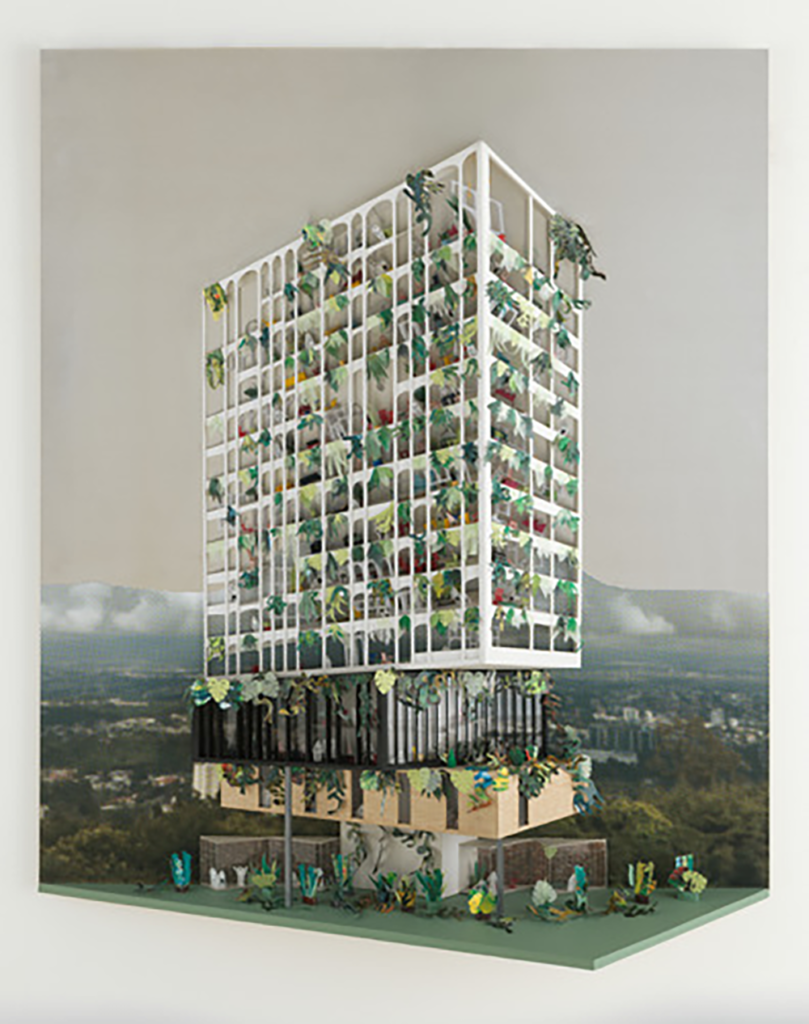
Tatiana Bilbao Estudio: Architecture from Outside In
March 21–August 2020
Floor 6
Mexico City–based architect Tatiana Bilbao considers domesticity from policy to livability. Her approach is based in an empathic understanding of local conditions — from the external socio-economic, environmental and sometimes political factors, to the internal — meeting with and learning from future inhabitants. Tatiana Bilbao: Architecture from Outside In will comprise models, drawings and photographs that illustrate Bilbao’s extensive research and proposals in response to how we live today, including a proposed masterplan for San Francisco’s Hunter’s Point neighborhood.
The residential projects of Tatiana Bilbao Estudio reflect the realities of contemporary lifestyles by incorporating flexibility without sacrificing dignity and domestic pride. Bilbao considered the Hunter’s Point community when redesigning its existing power substation into a net zero environmentally safe building, envisioning its transformation from community detriment to galvanizer by proposing surrounding public gathering spaces, neighborhood amenities and services as part of a large vision plan. This proposal, featured in the exhibition, will become an opportunity to consider a new urbanism that prioritizes civic health and community empowerment.
Meaningful support for Tatiana Bilbao: Architecture from Outside In is provided by the Gensler Family Foundation and Emily Rauh Pulitzer.
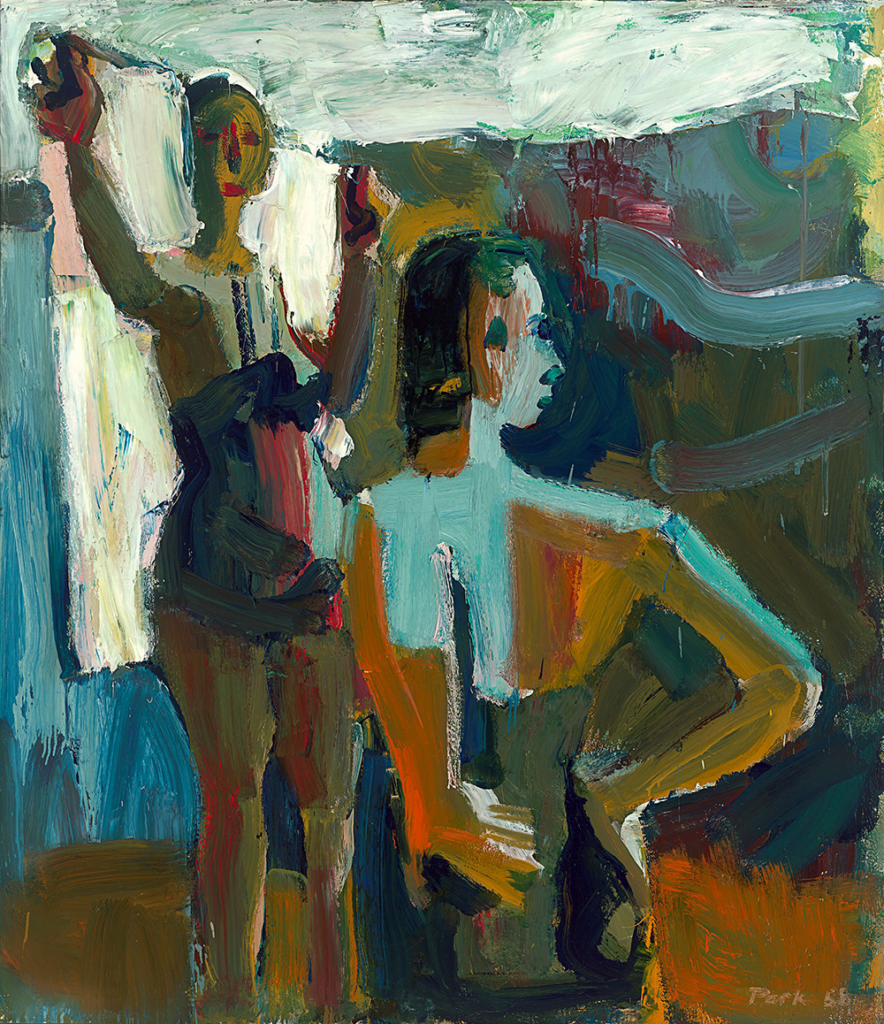
David Park: A Retrospective
April 11–September 7, 2020
Floor 4
At the age of 38, David Park (1911–1960) abandoned a carload of his abstract expressionist canvases at the city dump and started painting “pictures” — a radical decision that led to the development of Bay Area Figurative Art. Organized by SFMOMA, this exhibition will be the first major museum exhibition of Park’s work in three decades and the first to examine the full arc of his career. Approximately 125 works will be on view, ranging from his tightly controlled paintings from the 1930s to his final works on paper from 1960. The heart of the show will be a rich selection of the 1950s Bay Area Figurative canvases for which he is best known — boldly executed compositions featuring musicians, domestic and vernacular scenes, portraits, boaters and bathers — that reveal an artist deeply connected to human experience at the peak of his powers, reveling in the expressive and sensuous qualities of pure paint. An accompanying exhibition, David Park and His Circle: The Drawing Sessions, will examine the weekly figure drawing sessions initiated by Park, Elmer Bischoff and Richard Diebenkorn in 1953.
Major support for David Park: A Retrospective is provided by Doris Fisher, Patricia W. Fitzpatrick in honor of Neal Benezra, Janet and Clint Reilly, and anonymous donors. Generous support is provided by Jean and James E. Douglas, Jr., Mary J. Elmore, Christine and Pierre Lamond, the Stuart G. Moldaw Public Program and Exhibition Fund, Susan and Bill Oberndorf, the Bernard and Barbro Osher Exhibition Fund, the Thomas Weisel Family, Pat Wilson, and Anita and Ronald Wornick. Meaningful support is provided by the Wyeth Foundation for American Art. Additional support is provided by Robert and Daphne Bransten, Susan A. Engs, and Helyn Goldenberg and Michael Ayer. Generous support for David Park and His Circle: The Drawing Sessions is provided by Bobbie and Mike Wilsey.
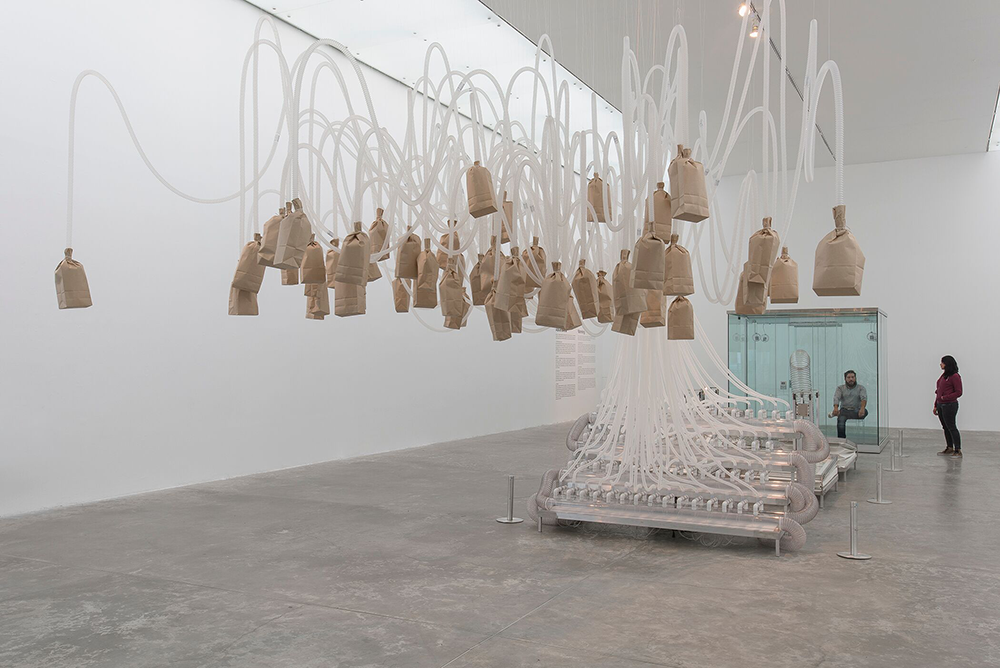
Rafael Lozano-Hemmer: Unstable Presence
April 25–November 1, 2020
Floor 7
The first major survey presented in the U.S. of the internationally acclaimed artist Rafael Lozano-Hemmer, this immersive exhibition will explore our presence in fundamentally unstable environments through a focused selection of 16 large-scale installations. Born in Mexico City and based in Montreal, Lozano-Hemmer encourages visitors to interact with and become a part of the artworks, many of which investigate the intersections of art, technology, science and politics. This presentation will feature, among other major works, Vicious Circular Breathing (2013) and Pulse Spiral (2008), two sculptural installations that respectively collect and recirculate the breath and the heartbeat of participants, as well as Zoom Pavilion (2015), a room-sized projection that captures and tracks patterns of our behavior in public space. Rafael Lozano-Hemmer: Unstable Presence is co-organized by the Musée d’art contemporain de Montréal and SFMOMA, which will be the exclusive U.S. venue for this exhibition.
Generous support for Rafael Lozano-Hemmer: Unstable Presence is provided by Lionel F. Conacher and Joan T. Dea, Debbie and Andy Rachleff, Carlie Wilmans, and Pat Wilson.
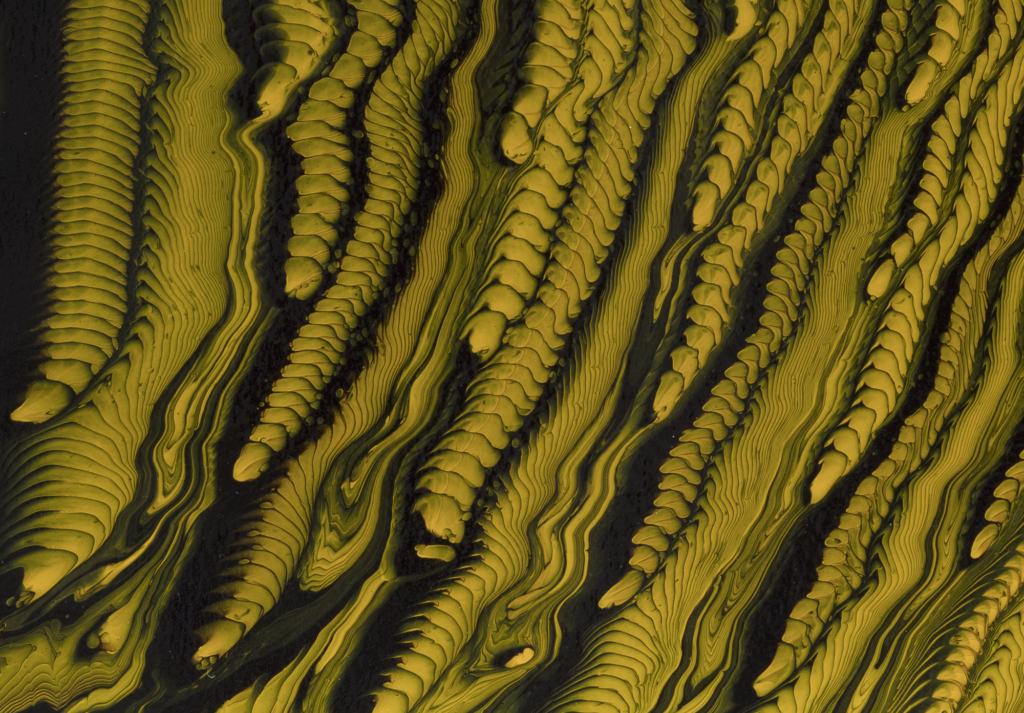
Tauba Auerbach — S v Z
April 25–September 7, 2020
Floor 4
Tauba Auerbach examines the boundaries of perception through an art and design practice grounded in math, science and craft. Her multifaceted interests often focus on duality, connectedness, rhythm and form, and intersect with questions about the structure of the universe. Working in a wide range of media, Auerbach has created compositions that explore the properties of letters and symbols; drawings, books and large-scale installations that study binary relationships; trompe l’oeil paintings that experiment with depth and dimension; weavings and glass sculptures embedded with wave forms; and videos that interpret theories in quantum physics.
This exhibition, Auerbach’s first museum survey, presents her prolific and varied output over the last 16 years. Included are Diagonal Press, the artist’s imprint for open-editioned publications, and Auerglass Organ (2009), a two-person pump organ created by Auerbach and the musician Glasser (Cameron Mesirow). This immersive presentation is designed by Auerbach, along with an in-depth catalogue that serves as both an artist book and an index of work, process and references, created in collaboration with graphic designer David Reinfurt.
Major support for Tauba Auerbach — S v Z is provided by Gay-Lynn and Robert Blanding and SFMOMA’s Collectors’ Forum. Generous support is provided by Martha and Bruce Atwater, Joachim and Nancy Hellman Bechtle, Jim Breyer and Angela Chao, Katherine Harbin Clammer and Adam Clammer, Fotene Demoulas and Tom Coté, Roberta and Steve Denning, the Elaine McKeon Endowed Exhibition Fund, Gina and Stuart Peterson, The Sanger Family Architecture and Design Exhibition Fund, Lydia Shorenstein, Sheri and Paul Siegel, and Sonya Yu and Zachary Lara. Meaningful support is provided by Thomas and Lily Beischer, Dolly and George Chammas, and Agnes Gund.

Future Histories: Theaster Gates and Cauleen Smith
April 25–November 1, 2020
Floor 7
Bringing together the work of two interdisciplinary artists, this presentation will center on video projections that each take archival magazine photography as a departure point. Gates’s Do you hear me calling? Mama Mamama or What Is Black Power? (2018) pays homage to the power of women by exploring the idea of the Black Madonna through reworking three decades of images appropriated from the Chicago-based Johnson Publishing Company archives, including Ebony and Jet magazines. A U.S. premiere, this two-channel installation will interweave scenes of musicians and singers, amplifying a performative approach to cultural legacies.
Smith’s Sojourner (2018) culminates with a feminist reimagining of an unpublished photograph from a 1966 Life assignment. Throughout the work, women performers take banners sewn with texts by jazz musician Alice Coltrane to different sites associated with community organizing and spiritual or artistic visionaries.
Meaningful support for Future Histories: Theaster Gates and Cauleen Smith is provided by Wayee Chu and Ethan Beard.
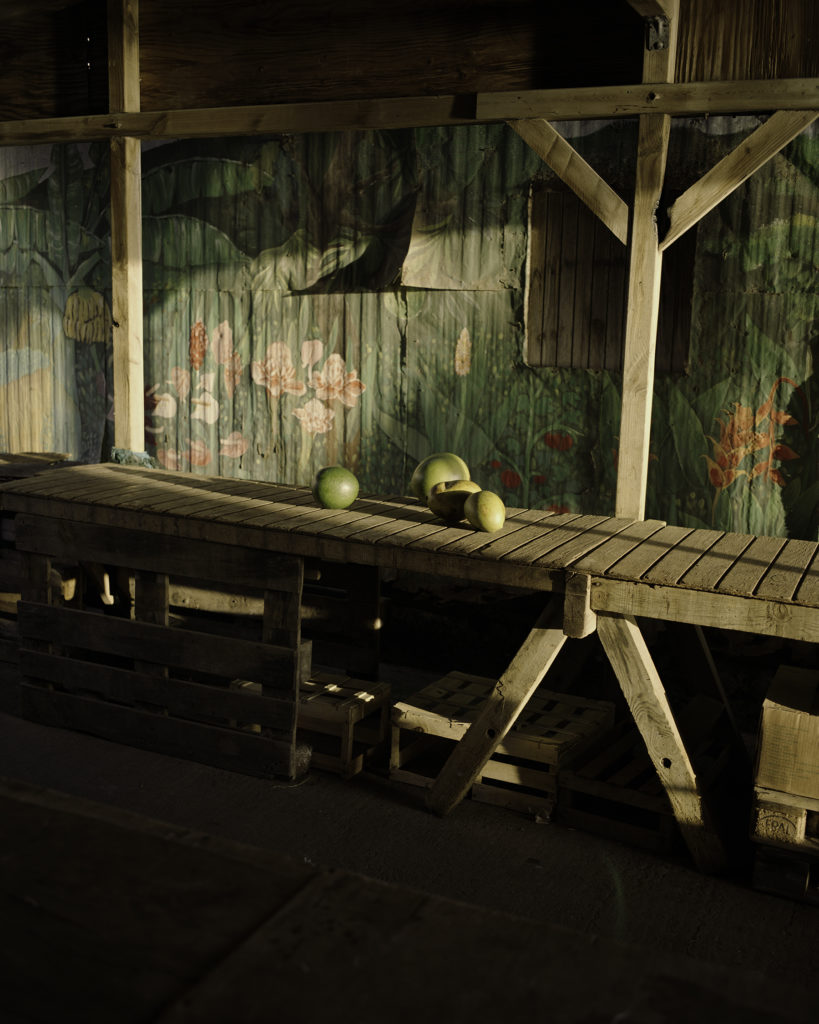
Gregory Halpern: Let the Sun Beheaded Be
Immersion, a French-American Commission of the Hermès Foundation
May 30–August 9, 2020
Floor 3
Gregory Halpern created the photographs in Let the Sun Beheaded Be over several months in the French archipelago of Guadeloupe. The exhibition title refers to a 1948 book by Aimé Césaire, a poet from Martinique who evoked the surreal as a lens through which to contemplate the forced migration and violent colonial past that shaped the Caribbean. Like Césaire, Halpern grapples with this history by conveying his experience of the islands through poetic and visceral details and motifs that drew his attention. A photographer who focuses on place as subject matter, he commingles life and death, nature and culture, and beauty and decay in enigmatic color images of Guadeloupe’s residents and lush landscape, as well as monuments related to the brutality of its past. Halpern’s photographs are grounded in reality, but edge toward the dreamlike. They serve as records of the encounters that punctuate daily life in a place layered with complex history, while simultaneously blurring the relationship between documentary and personal perception.
This exhibition marks a new partnership between SFMOMA and the Hermès Foundation. Gregory Halpern: Let the Sun Beheaded Be is an edition of Immersion, a French-American Commission of the Hermès Foundation. It is mentored by Clément Chéroux, senior curator of photography at SFMOMA.